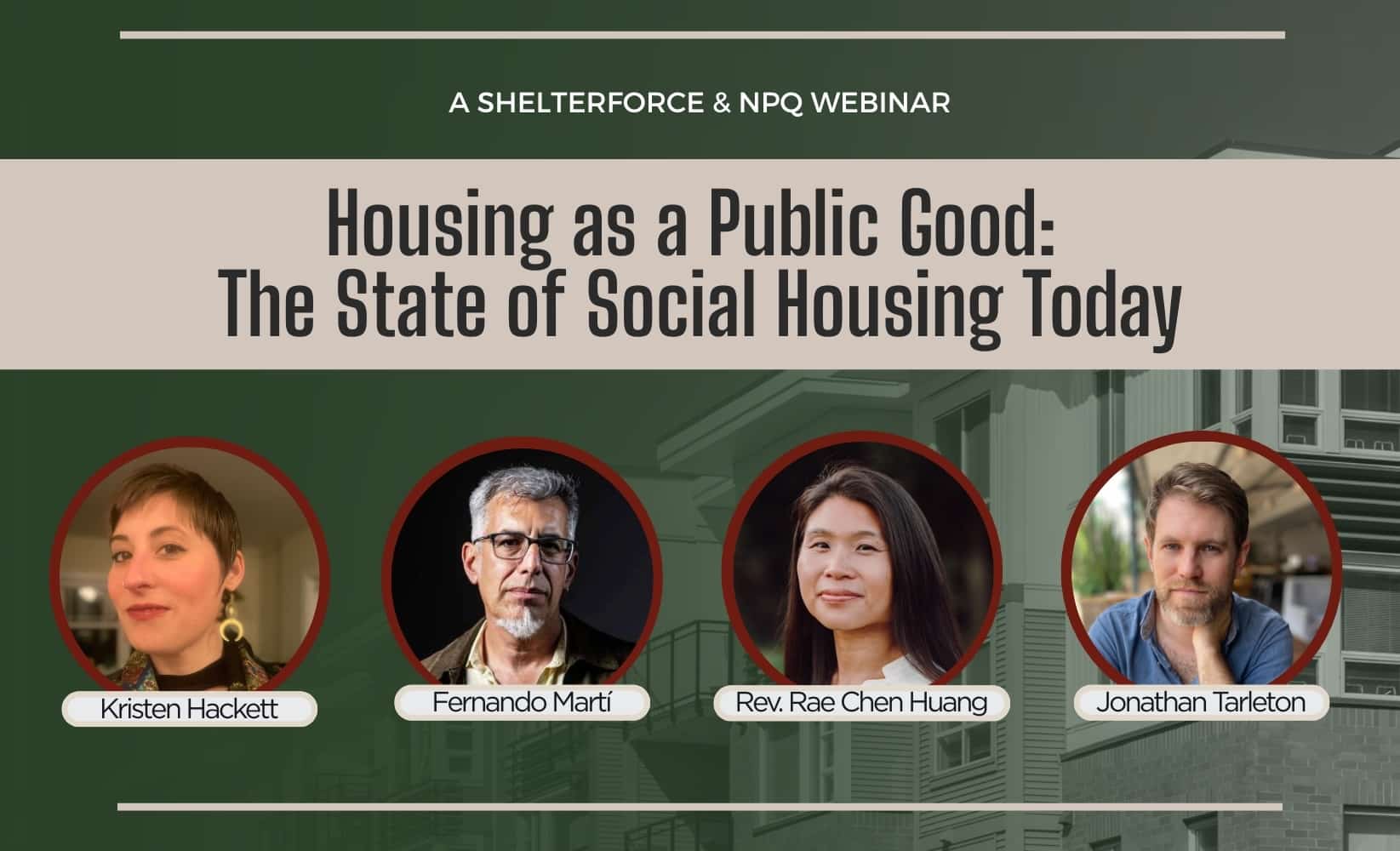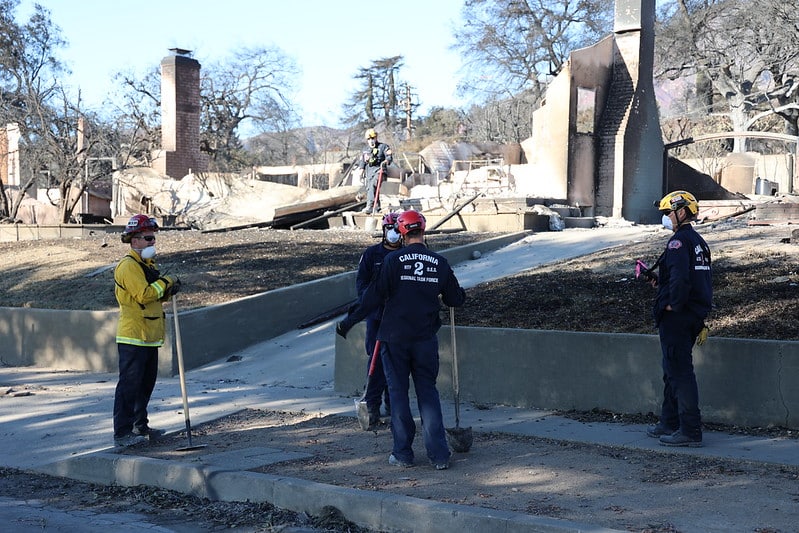Lisa Rice of the National Fair Housing Alliance was the keynote speaker at the Grounded Solutions Network Intersections conference in Pittsburgh on Oct. 3. She presented a fascinating and powerful account of the ways that government has been involved in increasing the wealth of certain groups of people in this country since its founding and before. She started with headrights, a policy under which European immigrants were given land stolen from indigenous people, with the acreage based on the size of their households—including indentured servants and slaves. She went up through the Homeowners Loan Corporation redlining maps and the ways our two separate and unequal financial markets combine with neighborhoods that are still effectively segregated to reinforce racial disparities in credit scores.
In the question and answer session, someone asked, “Why should the people buying homes in programs like community land trusts (CLT), who are mostly low-income people of color, be asked to ‘pay it forward’ in the form of resale restrictions, when the white people who benefited from all of these programs didn’t have to?”
(For those who are not familiar with resale-restricted shared-equity homeownership, the idea is that one subsidy creates permanent affordability because in return for a below-market price, owners agree to resale price restrictions that allow them some appreciation but not unlimited windfalls, keeping the home affordable to households in the same income bracket in perpetuity.)
It is a powerful question, and a familiar one to proponents of shared-equity homeownership. The standard responses to this concern go something like this:
- People buying homes through these programs wouldn’t be able to purchase a home at all without the program’s assistance, so when compared to renting, they are still coming out ahead in terms of asset building through the lower cost, forced savings, and predictable, if not windfall, equity building.
- Most community land trust homeowners do build enough equity to move into the unrestricted private market if they want to, so these programs can be seen as stepping stones if that is the desired goal. Land trust homeowners in Portland’s Proud Ground, for example, currently end up with an average of $76,000 in equity after 10 years.
- Land trust homeownership has a lot of support and safeguards built in, such that it creates a more stable asset-building opportunity for the long term, unlike the billions of dollars in home equity that people of color lost in the foreclosure crisis. From the 1970s to the mid-1990s, 50 percent of first-time lower income and minority homeowners lost their homes in under five years. In community land trusts, by contrast, 94 percent of owners make it past the five-year mark. And you must typically own for at least five years before you make money from owning a home. Especially for modestly-priced homes, appreciation matters less to building wealth than simply owning for a long time and paying a sound mortgage on time and in full.
- You can help a lot more people build wealth, and have access to neighborhoods that help them get access to other opportunities, with the same amount of subsidy with this model.
All of these things are true, and, I believe, good arguments.
The History of Home Appreciation
But hearing the question directly after Rice’s presentation crystalized something I’ve been trying to put my finger on for a long time. The concern about CLTs and Black owners particularly contains an unspoken assumption—that those massive windfall wealth gains that many white Americans accumulated through land appreciation in the 20th century were a natural result of homeownership, and would be replicable for African Americans now as long as they can get over the barriers to becoming homeowners at all.
But what Rice’s presentation itself reminded us of is that a very large portion of that wealth should be seen as ill-gotten gains. The increased value concentrated in segregated areas didn’t happen through some natural process that can just be extended to everyone like we could do with voting rights or public accommodations (however imperfectly we’ve actually done so).
By and large, buildings do not appreciate. They require maintenance and capital inputs to stay functional. Just ask any affordable housing asset manager. When we think of homes appreciating, it’s almost always the land and the location that is changing value. How it changes is not up to the homeowner, and it doesn’t always increase. Land values for homes are based on the changing fortunes and perceptions of the place the home is located—usually in contrast to other places.
And those changes have been driven by policies, or the ripple effects of policies, that have largely been applied in racially discriminatory ways—investments in infrastructure, schools, transit, parks; locations of jobs and amenities; access to credit, insurance, mainstream financial products; urban renewal and rezoning, and so on.
Previous generations of white wealth was based on land stolen from indigenous peoples and given to white people, and on slavery. The 20th-century homeownership wealth gains that compounded those disparities were realized because of policies and practices that affected the amount of appreciation in various communities. White wealth realized through homeownership was so disproportionately large because segregated white communities were able to hoard resources at the expense of other communities. That is what Rice’s presentation, The Color of Law, and any other look at the intersection of race and place in the 20th century tells us.
White homeowners were not all making an explicitly racist choice if they moved to these neighborhoods (though plenty were). They were, however, following and benefiting from the incentives of a system that concentrated resources and land value in segregated areas.
Fixing the Racial Wealth Gap
Let’s be clear about a few things:
- The racial wealth gap that segregation and redlining helped to cause is yawning and unconscionable, and needs to be fixed. In 2013, the median net worth of white households was $134,000. The median net worth of black and Latino households was $11,000 and $14,000, respectively.
- Access to safe, stable homeownership and home financing should be equitable. There are many reasons people want to own a home. Race should not play a factor in how possible that is, and it currently does.
- Stable, long-term homeownership does tend to help people build intergenerational assets through housing stability, access to neighborhood opportunity, forced savings, access to home equity, ability to pass something on to children.
But given why it was white households that were able to end up with so much wealth through publicly created, privately realized land appreciation, we shouldn’t expect that part of the experience to be exactly replicable. Those astronomical rises were predicated on the destabilizing of communities of color and the creation of concentrated poverty elsewhere. Today, redlined communities are still far lower in value than places that didn’t face redlining.
Even though a few homeowners of color are now able to benefit from the legacy of that system by realizing windfall profits in gentrifying areas, that’s not changing the system, it’s gaining very limited access to a system that is still generating much of its profits based on fears of “the other”—and inspiring exclusionary behavior from most people who want to profit from it.
Shared-equity homeownership on the other hand, is an example of changing the system. It is a sharing of risk and reward between individual and community that should contribute to shrinking inequality; a way to stabilize communities, benefiting renters and owners; a way to reduce the wealth gap while reducing economic segregation and without harming others by pricing them out; an attempt to spread homeownership to more people. It is an attempt to democratize our severely unequal system of land ownership. It is a rethinking of what’s possible.
(Certainly, for shared-equity homeownership to be a tool for racial equity will require explicitly looking at how well it’s doing, not just assuming it’s working. The field will need to track just how well the model is working for homeowners of color specifically, and listen to concerns coming from communities of color and tweak policies where needed.)
Shared-equity homeownership is not for everyone, and it will certainly not fix the racial wealth gap on its own. That will require taxing assets and unearned income more heavily so we can fund reparations-style programs with meaningful amounts of money. It will require fixing the biases in the credit scoring and lending system. It will require fully enforcing the Fair Housing Act. And many many other things.
People who are focused on fixing the racial wealth gap should by all means continue to fight for increases in targeted housing subsidies that match the scale of the problem and for fair access to credit and homeownership. But they should stop implying that we could close the gap by trying replicate how home appreciation worked for white families under segregated conditions, or by extension that shared-equity homeownership is somehow unfair. There’s plenty that’s unfair still out there, but shared-equity is part of the solution.




A very good analysis — thank you. Over a period of 30 years, I worked in several dozen US cities and towns setting up programs of land development, home construction, second mortgage financing and home purchase counseling operated mainly by nonprofits—that by now have helped thousands of lower income people become home owners. Much of this work followed on from structured, inclusive processes to create community-wide housing action plans.
Quite often in these processes, starting CLTs have been on the table as a possibility. I have helped to set up a few of them—the results of which I now have to describe as small, segregated enclaves of low-income families who can’t build equity in a rising market nearly as fast as other homeowners who bought similar houses the next block over.
I get the CLT theory: if much or all of our homes were in CLTs, it would certainly keep home ownership more affordable on a mass scale. But the mass movement to make that happen has proved to be a pipe dream. CLT’s have had upwards of 40 years to prove themselves, and the absolute number of homes in CLTs is minuscule. In some of the higher-volume “CLTs” some or many of the homes claimed are not in land trusts but simply financed as fee simple purchases using affordable second mortgage loans paired with bank loans and with no restrictions on resale prices. I have witnessed one land trust dissolve itself so the owners could more easily sell their homes and reap normal equity gains.
There may be other CLTs controlled by the residents (i.e., the original, purist CLT model) that went the same route—why wouldn’t they? Now most of the CLTs are managed by nonprofits that have significant and perpetual costs of administration, not least when they have to help owners find another qualified buyer who accepts the limited-equity regime (many prospective buyers don’t) and typically needs a lot of help in finding financing. Some don’t make it through these hoops and the marketing process often has to be repeated. These perpetual administrative costs, which are over and above the transaction costs of buying a fee simple home, ultimately come out of the pockets of the series of owners of any particular CLT home.
Scale has definitely been an issue in the shared-equity world for a long time. Limited equity co-ops have reached much bigger scale than CLTs, and might be making a comeback, and right now there are some factors that seem to be gaining ground to make CLTs finally make a leap to a larger scale. We’ll see!
As for privatizing, I’ve heard of that challenge sometimes with limited equity co-ops (with a move to put them on CLTs to ward against that). For CLTs that’s why the traditional tri-partite board structure doesn’t give a majority to residents. There are a lot of challenges still to be figured out for sure.
Glad to see this question continuing to be elevated and amplified. Related to CLTs and wealth building, a recent reference to the work of Grounded Solutions Network member CLT Proud Ground in Portland, OR by the Democracy Collaborative states:
“The typical Proud Ground homebuyer makes an average income of $41,000 or 65 percent of AMI at the time of purchase. Moreover, a recent report published reveals that average Proud Ground homeowner earns an estimated $60,000 in equity after ten years of homeownership including limitations on equity.”
see this link – https://democracycollaborative.org/community-control-of-land-and-housing
I’d say the CLT wealth building option for families in this specific example is very strong when compared to traditional investing in stock market, etc… all without the risk of potential predatory lending and the substantial cost barriers that come with typical market rate homeownership for families earning 65 percent of AMI.
The average Proud Ground owner in Portland earned that much ($60K) because of the particularly rapid rise in home values in Portland during that ten-year period. That rise in home values was due to gentrification which has caused a lot more misery for many who can no longer afford to rent in the city, much less buy.
Karen, that is true in general, but less true for Proud Ground than for homes not in a CLT. Much of that equity is from “forced savings” from paying back what they borrowed, since Proud Ground homes are resale restricted to keep them affordable to the same income bracket over time, mitigating gentrification and limiting any gentrification-induced windfall profits. There can be conversations to be had about exactly what that resale formula is and how well it’s doing its job, but there’s no question that the problem would be worse if those resale prices were not restricted. It’s the unfettered home sales that are really contributing to what you are describing.
Given that housing alone can’t close the racial wealth gap, what are the implications for the Warren bill? I’ve seen some lively debates about it, with some critics concerned it would ultimately enrich the same actors who got us into the housing crisis in the first place, while failing to provide the good jobs and redresses that Black DOS would need to afford homeownership over the long term. Check out Mehrsa Baradaran’s Twitter feed, especially the comments on her tweet on 10/26 at 12/11 pm (not sure if this link will work). Also click on Antonio Moore’s reply. https://twitter.com/MehrsaBaradaran/status/1055899643803025410
I can see how limited equity ownership could sidestep some of these issues. But as you said, it would take many complementary measures to make it more than a consolation prize, and to cut into the ill-gotten windfalls capitalized in home values – especially when Milliken v. Bradley lets school demographics and “quality” make or break the home values in entire neighborhoods.
Rose, that’s a good question. I think the Warren bill is a very good, if not perfect, bill for addressing the housing crisis, whether or not it fixes the racial wealth gap. (And that will have a racial equity effect, since there is racial inequity in housing instability and cost burden.) I think that targeting assistance to formerly redlined neighborhoods is one way to start to acknowledge the history of how we got here. Not enough, but again, I don’t think we should expect to fix the wealth gap through housing measures alone.
(Update: Proud Ground sent updated numbers. They currently estimate homeowners end up with about $76,000 in equity after 10 years, not $60,000 as originally stated.)
All valid points. There are, however, opportunities for some of us in some markets to help build wealth for low income black families quickly. We sold a house last week to a family — already renting the home. Their costs went from rent of $750 a month to $344 — including taxes and insurance. We found them $22,000 in Down Payment Assistance — some requiring they live there 10 years, some unrestricted. This is in a market where values are going up 25% annually. We’ve done 3 of these deals in 3 weeks. This has serious potential to build equity.
Many of these DPA sources and good loans are available only to low-income families, and often in minority neighborhoods. We need to take advantage of these programs while they last. By the way, one of the loan officers said to our buyer — “Black folks always want something for nothing.” Right.
Steve, that comment from the loan officer is mind-bogglingly awful. Yuck. And yes, none of this is to say there aren’t a variety of options that have potential in different contexts to help individuals.